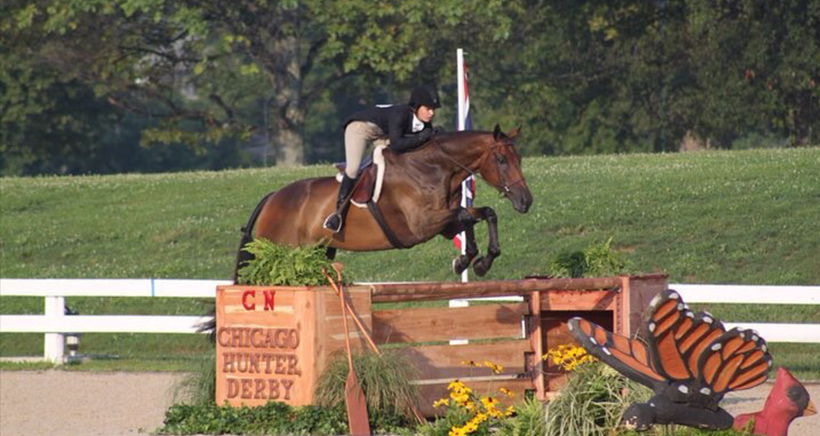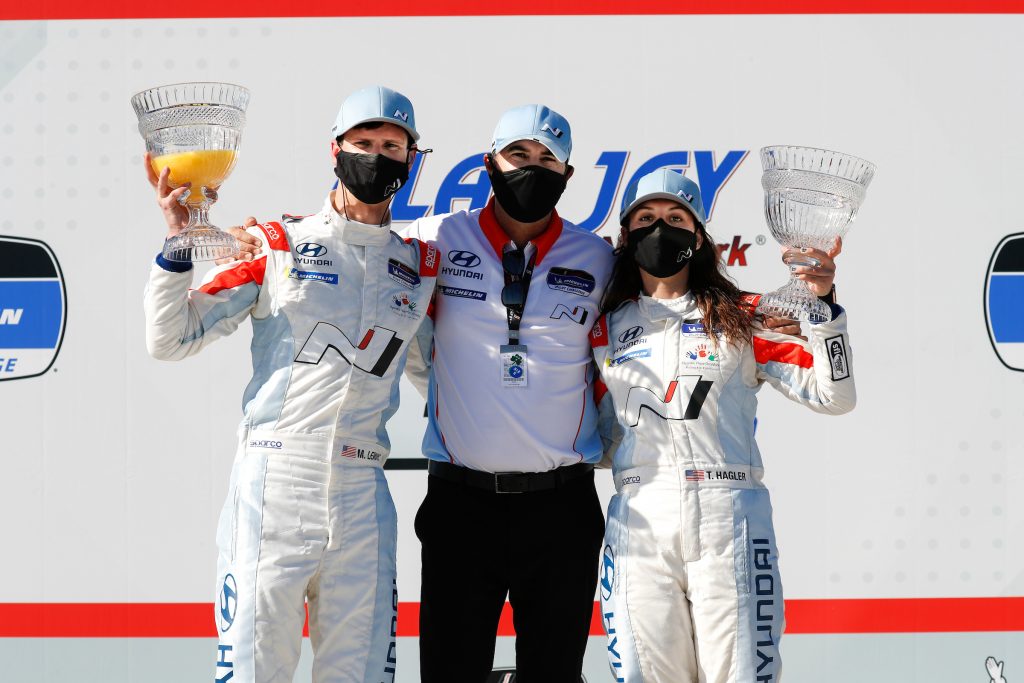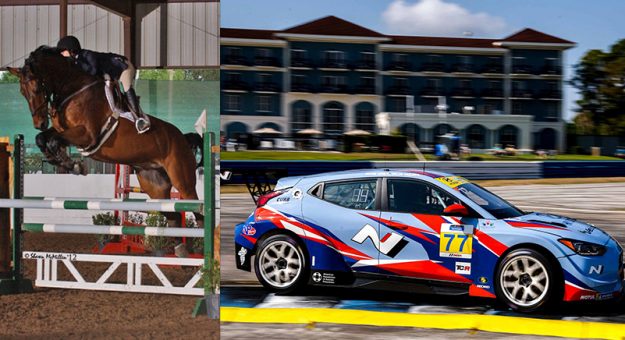Current TCR Points Co-Leader in IMSA Michelin Pilot Challenge Took the Road Less Traveled with Fast Results
By Jeff Olson
DAYTONA BEACH, Fla. – When one IMSA driver recently joked that another competitor might excel at equestrian show jumping, he may actually have been onto something.
To wit: The current co-leader in the Touring Car (TCR) class of the IMSA Michelin Pilot Challenge, who credits her experience in equestrian show jumping with the foundation for some of her racing skills.
“They’re actually super similar sports, to be completely honest,” said Taylor Hagler, who with Bryan Herta Autosport teammate Michael Lewis leads the TCR standings after finishing second in the No. 77 BHA with Curb-Agajanian Hyundai Veloster N TCR on May 15 at Mid-Ohio Sports Car Course. “There’s the competition factor and the focus.”

Hagler, 25, spent her teen years in show jumping – a highly competitive equestrian sport that’s been a part of the Summer Olympic Games since 1912 – across the U.S., in one year attending nearly 30 events. The competition is technical, athletic and difficult. It also encases some of the same aptitudes required by motorsports.
“Learning a show jumping track is like learning a race course,” Hagler said. “You use all the same hand-eye coordination in a race car that you use when you’re show jumping. They’re pretty similar.”
Her interest in auto racing goes back as far as her interest in horses. Hagler’s dad, Robert, was into SCCA racing. Her mom, Dawn, was into equestrian events. Taylor chose show jumping, and soon began a busy schedule of traveling from their home in Bulverde, Texas, to events across the country.
“It was mostly me and my mom who went to shows,” she said. “There were a few years that we were pretty much traveling every other weekend. I did a lot of middle school and high school online because of all the travel. We didn’t travel nearly as extensively as I do in racing – it was shorter, only a Friday-to-Sunday thing – and we definitely didn’t go to as many states, but we traveled quite often.”
Then, while a student at the University of Texas-San Antonio, Hagler experienced a return of her interest in auto racing. When she was 20, she completed a Skip Barber Racing School session. And, just like that, she began the transition from horses to cars.
“I really enjoyed racing and was able to find all of the similarities between the two,” she said. “I was able to use things that I learned in show jumping and transfer that into racing – like looking forward and learning the tracks, which is similar to learning the courses in show jumping. It’s pretty easy to transfer those skills from one to the other.”
A few years removed from the Skip Barber session, she’s a full-time member of the Hyundai factory team and co-leading the TCR driver standings. The suddenness of her racing success is sometimes shocking even to the person who set and attained the goals.

“I didn’t really think that starting my fourth year I would be a factory driver,” Hagler admitted. “It all happened pretty quick. I didn’t really expect to be here by this time. I thought it was going to take a bit longer, but I’m pretty satisfied with it. I’m comfortable.”
Most professional racers were racing karts before they were 10 years old, usually transitioning to cars in their teens. Hagler’s path was quite different. She skipped karts altogether and didn’t start racing cars until 2018, when she was named NASA Texas rookie of the year.
A shorter, cars-only career progression has its disadvantages, but Hagler doesn’t see it as terribly significant.
“I feel like I have to work a little bit harder when I’m at the track to acclimate to certain things in the car that I’m not used to,” she said. “But it hasn’t been too bad. I feel like I had a natural knack for it and not being in karts wasn’t too much of a disadvantage. I was able to step into it and get where I am just from working a bit harder.”
Her goals aren’t necessarily long-term; instead, she’s focused on what’s immediately ahead. In her case, it’s the next Pilot Challenge race, the Tioga Downs 240, a four-hour event June 26 at Watkins Glen International.
“Obviously, there are things I want to accomplish within a certain time limit, but it’s hard to plan things around the racing industry or around life in general,” Hagler said. “Usually, things don’t go as planned no matter how hard you work at it. There are certain things that are out of your control. I definitely have plans and things I want to accomplish in a certain timeline, but I’ve also learned to take things as they come and just keep looking forward.”
One jump at a time.
